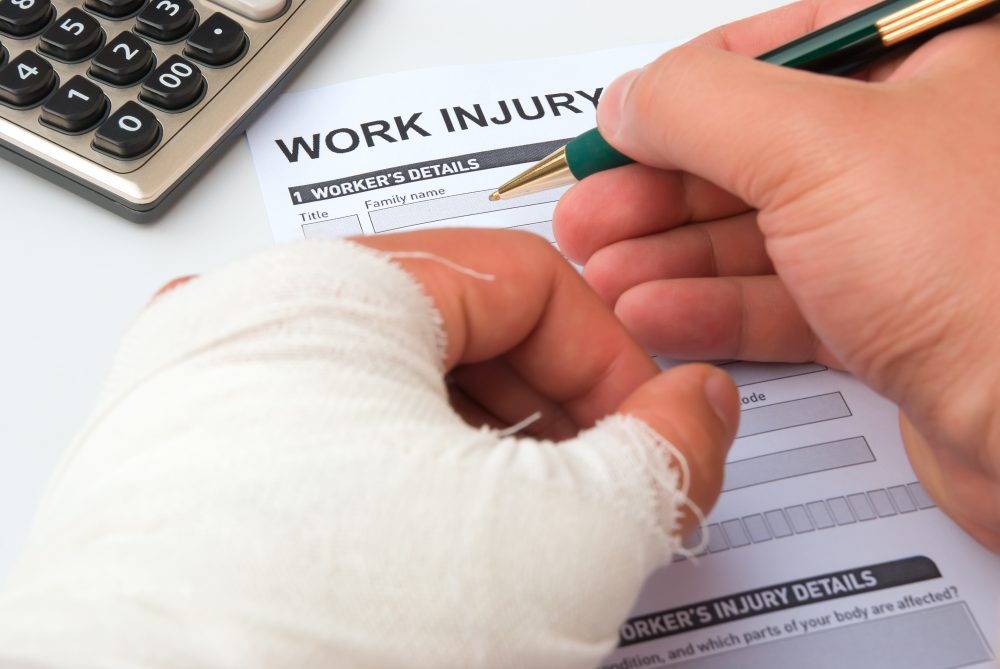Can I get workers compensation for Complex Regional Pain Syndrome (CRPS)?
What is CRPS? Complex Regional Pain Syndrome (CRPS) is a broad term to describe excess and prolonged pain and inflammation that can follow an injury to an arm, hand, leg or foot. The pain can be excruciating, even for something as mild as a gentle touch. Other symptoms include changes in skin colour, sweating, temperature change (i.e. hot or cool to touch), swelling, excess hair growth and nail discolouration or unusual nail growth over the affected area.

CRPS is a serious issue often overlooked by experts, insurers and injured workers themselves, says Adelaide workers compensation lawyer Alex Harris.
Complex Regional Pain Syndrome (CRPS) impacts about 5000 Australians every year, and we have been seeing an increase of injured workers affected by the condition.
CRPS comes with many unknowns, which means it can be overlooked by medical practitioners, insurance claims agents and even the injured workers themselves, leading to a delay in diagnosis.
To help injured workers identify CRPS and then deal with their compensation claim as quickly as possible, here are some key considerations.
Why is a diagnosis important to your workers compensation claim?
In a workers compensation claim in South Australia, CRPS can rate very high for the purposes of a Whole Person Impairment (WPI) assessment. This means that if the condition is accepted by the insurer or compensating authority, more compensation is usually payable.
But this claim isn’t easy. There is a set of strict criteria that needs to be followed in order to a) be eligible to have the condition assessed for Whole Person Impairment and b) actually rate on the day of assessment to enable compensation to be payable.
In order to be eligible to have CRPS assessed, injured workers are required to have the following criteria met:
- A diagnosis must have been provided by at least two doctors;
- A diagnosis must be present for at least 12 months in order to confirm the condition is at ‘maximum medical improvement’.
If the above criteria are met, an injured worker can proceed to undertake the Whole Person Impairment assessment, however in order to ‘rate’ for permanent impairment (and have compensation payable) they must satisfy the diagnostic criteria set out in the Return to Work SA Permanent Impairment Assessment Guidelines.
Making a successful claim
Successfully identifying and handling a CRPS claim will have an impact worth thousands of dollars to an injured worker.
A number of clients who have recently sought advice from TGB discovered they were living with the painful condition without it having been formally diagnosed. With our assistance, the workers have had their claims accepted and been assessed for permanent impairment, resulting in them receiving greater compensation than they might otherwise have been entitled to if they hadn’t obtained legal advice.
Example
A recent decision against the Return to Work Corporation of South Australia relating to CRPS [Esposito v Return to Work SA [2021] SAET 151 (29 July 2021)] turned on the criteria for diagnosis of CRPS, and reinforced the need for “diagnosis” to be present for one year before any Permanent Impairment Assessment (PIA).
In the decision, it was recognised that our client, the applicant, had been diagnosed more than one year before PIA, and therefore had satisfied the assessment criteria and was entitled to a WPI Assessment for CRPS.
This outcome is significant, and will likely result in our client being entitled to much greater compensation.
If you’re reading this and believe you may have CRPS, the first thing to do is discuss it with your doctor. The sooner you get a diagnosis the better, that way you’ll know where you stand, you can get the appropriate treatment and also commence the process for getting the condition covered with a Whole Person Impairment assessment. Having a lawyer assist you with the overall process is crucial, as the system is complex.
The risks of going it alone
Trying to manage a CRPS related compensation claim and Whole Person Impairment assessment yourself will most likely be very costly. Trying to deal directly with the compensating authority yourself, without expert legal advice and support, can not only make your claim process inefficient and time consuming, but is also highly likely to see you end up with significantly less compensation.
An experienced workers compensation lawyer will not only know how to navigate the system efficiently, but will also be able to ensure that every aspect of your diagnosis is explored and covered in the assessment, helping you receive your full entitlements.
What next?
Talk to an experienced workers compensation lawyer at TGB Lawyers in South Australia. Book a free initial interview, and we’ll tell you quickly whether you have a claim or not.
We’re here to help, get in touch with Alex Harris on 1800 730 842 or via aharris@tgb.com.au.